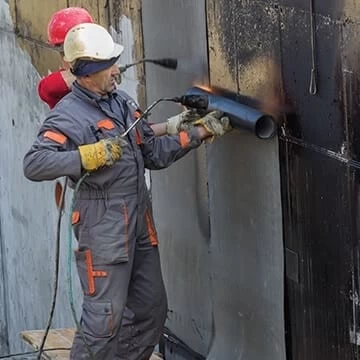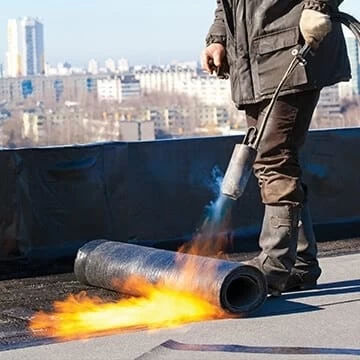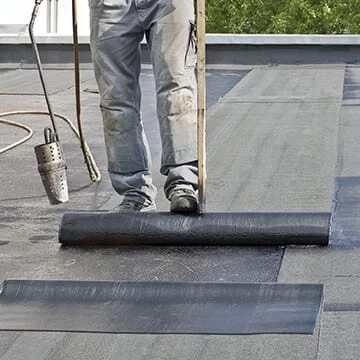Waterproofing Membranes
Waterproofing is a basic requirement of construction. A building or structure is waterproof using membranes and coatings to maintain structural integrity. Nevertheless, many households and commercial buildings annually report damages and problems that may be due to insufficient waterproofing and implementation. To avoid such problems, you can have a look at the membranes, which are one of the waterproofing systems that give effective results. waterproofing membrane is an effective material that can meet your needs.
Sometimes a completely waterproof membrane is removed from the design, but this is not the main reason behind the waterproofing failure. Poor workmanship is the leading cause of waterproofing failures; 90% of all malfunctions occur due to negligence or inadequate workmanship. A waterproofing membrane is required to protect the floor from liquids that can penetrate or damage it. This is especially true if there is a room or foundation under which water to be insulated under it can be damaged. Therefore, ground penetrations such as floor wastes and other luminaires need to be carefully placed on the membrane in order to ensure continuity of the waterproofing and to ensure sub-surface drainage. Waterproofing to specially designed drainage systems can significantly increase the integrity of the waterproof membrane to drainage. In short, if you don’t want to secure your business and experience problems in your home after poorly made insulation work, you should include the waterproofing membrane in the construction process.
What is Waterproofing Membrane?
So, what is the waterproofing membrane? The word membrane is essentially the name given to selectively permeable biological structures. Inspired by this situation, the construction sector has developed waterproofing membrane technology. A waterproofing membrane is a thin layer of material used to prevent water from coming into contact with another material on which it is placed. The waterproofing membranes may be sticky or may be placed on the material to be protected. Waterproofing membranes are made of many different materials and are commercially available in various sizes and thicknesses. For this, working with specialist brands in the field, providing pre-purchase consulting and post-purchase customer service services, will help you to get accurate results in the long run. Baumerk’s expertise in waterproofing is also available for your membrane requirements.
Waterproofing membranes are used to prevent water from compromising the structural integrity of the concrete, but are used in many applications such as concrete coating, or coated in water-soaked products where corrosion is important.
Where are the Membranes Used?
The usage areas of membranes are quite wide. Membranes can be used in many places where insulation is required throughout a building. Building sections that can be insulated with waterproofing membrane can be listed in this section:
- Terrace flooring and balconies
- Toilets
- In and around Basements
- In concrete water tanks (use a food-safe membrane)
- Swimming pools
- On landscaped concrete floors, between soil and concrete
- In the grooves
What to Consider When Choosing Waterproofing Membrane?
If you want to strengthen your construction with the ideal waterproofing membrane and add quality to the quality of your home, there are points
UV Stability
If the membrane is exposed to the sun, it must be resistant to UV rays or resistant to UV rays, otherwise it will deteriorate over time. Constructions made with poor quality waterproofing membranes do not give easy results. Baumerk’s products have high UV stability.
Elongation
Elongation is the ability of waterproofing membrane material. Measured in percent. A 150% elongation means that the membrane can extend up to 1.5 times its length when pulled. Elongation is a must in buildings that will move like tall buildings or flexible buildings made of steel. This will allow the membrane to be stretched over future cracks. Membranes with elongation properties of more than 200% are available. If you choose a waterproofing membrane that is a Baumerk product, you will not have any problems with elongation.
Breathability
Smart insulation is insulation that knows what to do and what to hold. A surface should not be prevented from breathing through waterproofing. Breathable membranes help release water in the form of vapor. Therefore, some membranes do not allow water to pass through, while also allowing water vapor to pass through. In this way, the breathing membranes in time allow vaporized water to evaporate to the atmosphere. Bamuerk products are breathable. In this way, they do not have different problems in the long term.
Tear Resistance
One of the important features of the waterproofing membrane is the resistance to tearing. This is an important feature because many membranes with good elongation can easily be torn. Take a small sample of your material and try to divide it into two parts. This gives a fair idea of the tear resistance. If you are looking for a tear-free membrane, even if you apply a reasonable force, we recommend that you take a look at Baumerk products.
Wear Resistance
The waterproofing membrane should also be resistant to wear, such as other materials used in construction. The ability of a membrane to withstand wear and tear is particularly important when it comes to waterproofing membranes. Because most of the membranes are covered with reinforced concrete handles and floors, during the construction period, wear resistance is exerted while workers walk on the surface, nails and screws fall and damage hard objects such as rebar against the membrane. A very soft membrane with low wear resistance can be damaged in such a case and this may cause leakage. Baumerk products are highly resistant to abrasion.
Chemical Stability
You need to check that the membrane is chemically inert to the environment in the building. Some membranes, especially outside the basement walls, are exposed to soil and rain water outside. For this reason, you can check Baumerk products for high chemical stability.
Waterproofing Membrane Types
Depending on your wishes and needs, the types of waterproofing membranes you may use in your construction may vary. Baumerk offers a variety of Waterproofing membrane types to meet many different needs. Let’s take a close look at these species.
APP and SBS Additive, Polymer Bituminous Fabrics
Among the waterproofing membrane types, the two main products are APP and SBS doped polymer bitumen coverings. The polymer modified bitumen or modified bitumen (MB) layer membranes were developed in the early 1960s. Since the mid-1970s, polymer modified roof membranes consist of reinforcing fabrics. Among Baumerk products, it is possible to find the highest quality and latest technology sample versions of APP and SBS doped membranes.
There are two types of MB roof membrane:
Bitumen membranes modified with SBS polymer are widely used in hot applications. Some IMM-modified membranes are self-adhesive; that is, they contain a sticky support.
Polymer-modified bituminous membranes are typically applied to the work or torch. The NRCA does not need to be used on a wooden deck.
In general, APP modifiers give a plasticized quality in the asphalt and SBS exchangers give a rubberized quality on the asphalt. EPDM, which is MB membranes and a thermoset membrane, is generally used in roof covering. MB and EPDM membranes are sometimes called rubber roofs.
The APP and SBS-attached waterproofing membranes can be used for different purposes.




